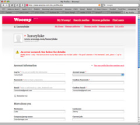-
About
- About Listly
- Community & Support
- Howto
- Chrome Extension
- Bookmarklet
- WordPress Plugin
- Listly Premium
- Privacy
- Terms
- DMCA Copyright
- © 2010-2025 Boomy Labs
 Stewart Rogers
Stewart Rogers
Listly by Stewart Rogers
Which of these marketing automation techniques is good (ethical, useful and 'white hat'), and which are evil (unethical, bad and 'black hat'). YOU DECIDE!
Vote up anything you feel is good, and vote down anything you find evil.
Read the full story and background on this 'list poll' at http://sqz.co/f6JNw2t
Source: http://sqz.co/f6JNw2t
















The new Calendar of Content Ideas helps you create stunning social media posts based on holidays, trends, events and more

Curating, creating and posting content to social media can take up a lot of time. Wouldn't it be nice if there were an easier way?

Free webinar series on how to start Social Media Marketing Agency by offering social media services.
Over the past several years, machine learning on Facebook’s platform has reduced the level of effort needed by advertisers to manage and optimize their ad targeting, bids and budgets. As its algorithm changes, user acquisition strategy must also adapt. Over the past two years, Facebook’s system has evolved from bidding for impressions, to clicks, to installs, to events (purchase), to value. This shift has improved the quality of traffic and simplified the ad buying process. Additional improvements have been made in using broad audiences (no targeting) and the introduction of native rules inside Facebook’s Power Editor and user interface (UI) changes to improve traffic quality and simplify ad buying. As automation and AI level the playing field between large and small advertisers, they have also simplified the work required to maintain performance, using fewer, less trained user acquisition human resources.
As a recent example, Facebook’s algorithm changed in the middle of February 2018, and it now rewards advertisers who adhere to their best practices. This affected the strategy for user acquisition managers who may have previously relied on trying to game the Facebook algorithm or develop their own proprietary AI systems outside of Facebook, and the impact of these changes was felt industry-wide. Previously, Facebook did not penalize advertisers for using a nad buying strategy that required a high volume of ads with significant overlapping audiences that frequently made intraday changes to bids, budgets and pausing of ads.
Creative Takes Center Stage
Now that Facebook’s optimization has been radically simplified, ad creative has become the primary differentiator for advertising performance. As with most display networks, ad creative rapidly fatigues with increased spend and audience reach. The more you spend, the larger the audience you target, the faster your ads’ performance will erode. Advertisers are now shifting their focus and resources away from manual bidding adjustments towards creative strategy, production and optimization. Cutting-edge user acquisition experts have realized that maximizing return on ad spend (ROAS) is more efficient achieved through creative optimization and testing.
Machine Learning is Coming to Creative Analytics
The ability to measure creative performance is beginning to emerge through a combination of machine learning technology and automated workflows. Advertisers are navigating an industry that will soon be democratized by AI and automation, and creative analytics is this newest area to reap the benefits. By measuring the performance of ad creative and by gathering creative insights, advertisers can more easily make strategic decisions that will help them achieve ROI.
Read More at https://mta.media/qtvm9

It’s safe to say that email has a bad reputation. We all know the feeling of checking your inbox first thing in the morning and having to delete dozens of unwanted emails from companies you may (or may not have) done business with once upon a time. Even in the post-GDPR era that we now find ourselves in.
Added to this, marketers have been given an ever-increasing tool kit in recent years with which to reach potential customers, leading many analysts to suggest that traditional email campaigns are dying. At Clever Monitor, we happen to agree.
At first you may think this is an odd thing for a marketing automation company to say, however, let me explain why this is the case.
Traditional email campaigns are based on static lists of contacts that are in your database. They don’t change unless you physically add or remove them. While they may be beneficial for that one-time email or an infrequent newsletter, success is largely impacted on the quality of your initial contact.
While you may have segmented your list and organized it based on their personas, as you can’t amend it much, you are likely to be marketing to the wrong people, at the wrong time. And your email is going to end up in the trash.
Dynamic Segmentation – Email marketing 2.0
It might be a simple concept, but there are many marketers out there that still don’t understand what dynamic segmentation is and how it can revolutionize your approach to email marketing campaigns.
Marketers spend hours figuring out the best practices that will trigger lead activation and create conversions for your brand. With dynamic segmentation, you are able to send out emails and let the technology do all the filtering for you.

Today, there are more than 7,000 marketing technology solutions offered by 6,242 companies, up from approximately 150 just eight years ago. With so many options, it can be difficult for businesses to develop the right customized marketing technology stack. They’re challenged with streamlining their stack to best reach customers and deliver the most value.
Although there is no one-size-fits-all model, in order to build the best MarTech stack for your business, you must first understand the basics – where do your customers spend the most time and what is the end goal of your communication? Once you’ve answered these questions, you can start taking advantage of emerging technologies and incorporate them into your stack.
Identify where customers spend the most time.
It’s imperative that businesses understand their customers’ tendencies and what technology they’re already using. No matter the age of your audience, most people check their email daily and are active on social media. To effectively target customers via email, you can utilize tools like Mail Chimp to launch campaigns, welcome new customers and keep them up-to-date on new products. For social media, software such as Hootsuite helps manage your business’ social media platforms, while analytics tools like Keyhole measure the types of content that generate the greatest response.

Data Strategy as a Key Competitive Advantage
At a simplistic level, generating engagement from your targeted personas comes down to a list, creative, an offer and timing. I contend that a list, or more accurately, just-in-time-data is most important because, without accurate and relevant data, the other elements of a B2B demand generation campaign are completely marginalized.
To help you put your own data strategy in place, I’ve laid out four critical steps you need to complete PRIOR to selecting a data partner.
Define the Objectives of Your Data
Before you begin thinking about the data you’ll need, you must understand 1) what you want to accomplish and 2) how you’re going to measure the results. Work closely with your internal stakeholders—sales reps, inside sales team, marketing team members, and product owners—to determine what they want to accomplish. Is the product owner looking to reach a new market sector? Does sales want to close more sales each month?

Sales, marketing, web tools and gadgets. Detroit Red Wings, Man United & Ferrari F1 are my teams. #UsGuys is my crew. Founder @UsFitties. http://sqz.co/Zn6w9MF